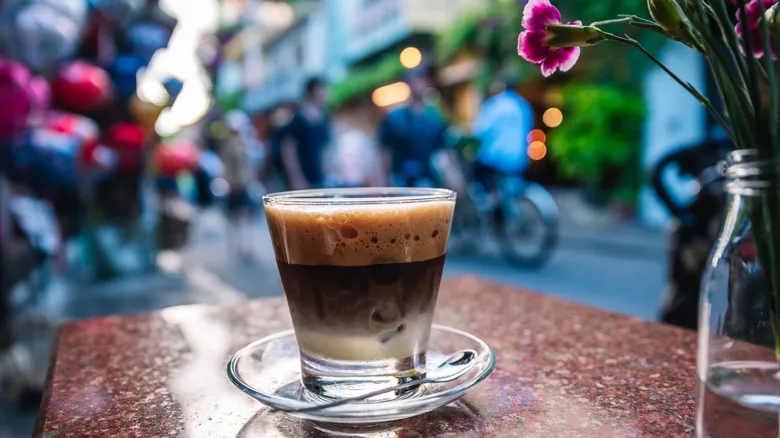Vietnamese coffee has French roots

French colonists introduced coffee to Vietnam during their occupation in the mid-19th century. Due to the scarcity of fresh milk, they opted for sweetened condensed milk as a substitute, which is more shelf-stable and effectively balances the bitterness of the strong dark roast. By the early 20th century, coffee farmers realized that robusta plants flourished in the Central Highlands' soil and climate, solidifying coffee's status as a key agricultural product in the country. The departure of the French and the Vietnam War led to heavy regulation of coffee, turning it into a luxury item. However, the economic reforms of 1986, known as the ??i M?i reforms, spurred rapid growth in the coffee industry and opened up export opportunities.
Today, Vietnam contributes 17 percent of global coffee production, making it the second-largest coffee producer in the world, following Brazil. Cà phê ?á is a daily staple across Vietnam and a favorite among visitors. In a Vietnamese café, you might encounter exciting variations that incorporate ingredients like coconut milk or even salt, but nothing compares to the classic combination of dark roast coffee, ice, and a splash of condensed milk for an authentic Vietnamese café experience.
Recommended

The Nespresso Tip That Transforms Any Coffee Pod Into Espresso

Don't Let Your Apple Peels Go To Waste. Make A Delicious Drink Instead

Is There A Difference Between A Frappe And Frappuccino?

Australians Swear They Add An Unlikely Condiment To Their Morning Coffee
Next up

